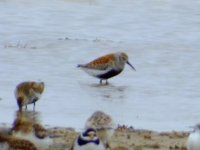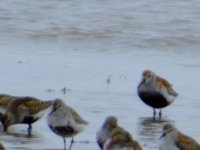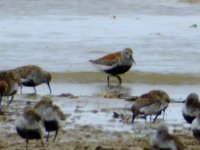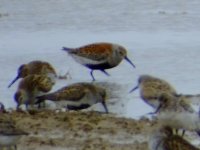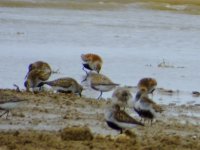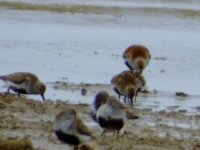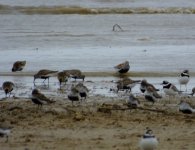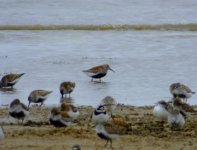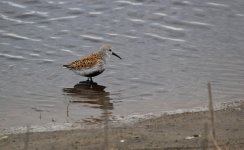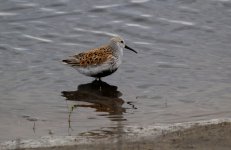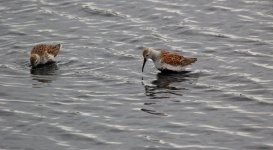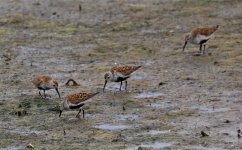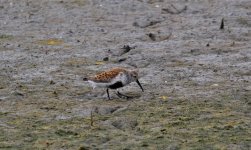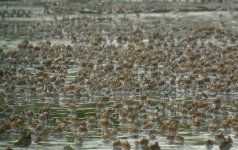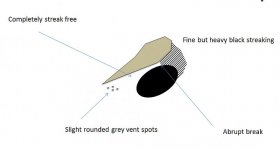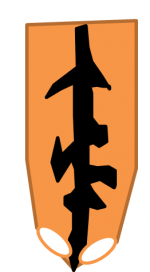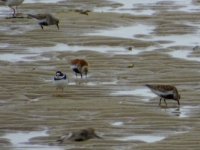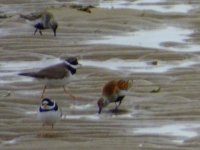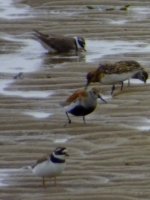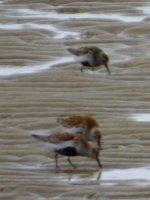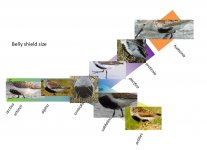Bearing more than just a hint of similarity with the “Red-backed Sandpiper” seen at Cley in May 2011 (it could almost be one and the same), this gorgeous looking Dunlin was photographed on the beach near the East Hills, Norfolk on May 24th by Stuart White. The ghostly palour of the barely marked face and breast, long bill and striking rich terracotta, largely unmarked scapulars make for a particularly eye-catching individual, but where has it come from?
The East Hills bird appears to be a match for a Pacific form, perhaps the closest fit could be sakhalina, although there’s a chance that it could just be an ultra-bright alpina or perhaps centralis.
As it stands, the Cley bird from a couple of years ago is now not thought not to be an American Dunlin but more likely to be in the sakhalina ballpark as well (or an adjacent northwest Pacific form). The taxonomy of Dunlin is somewhat murky at the moment, so there aren’t too many places to go with any of it currently, but that shouldn’t detract from this super looking bird.




